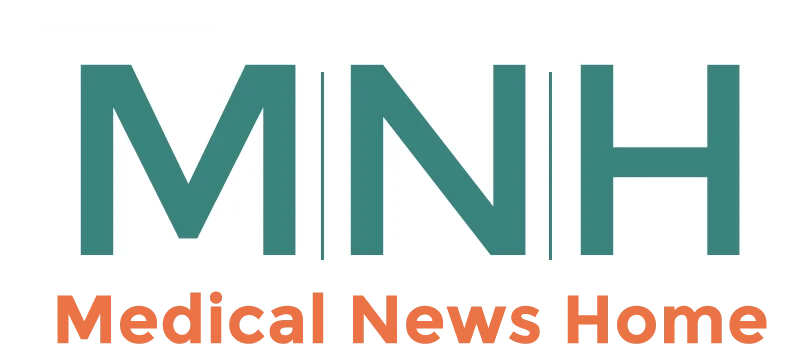The use of Wearables and Sensors for Remote Patient Monitoring
- Updated on: May 7, 2025
- Published on Jan 19, 2023

Remote patient monitoring is a vital aspect of healthcare delivery, as it allows healthcare professionals to track patient’s health status and vital signs remotely. This enables early detection of potential health issues, improves the management of chronic conditions, and reduces the need for hospital visits. Additionally, it also helps to improve communication and coordination between patients, physicians, and caregivers. Overall, remote patient monitoring is a crucial tool in improving patient outcomes and reducing healthcare costs.
Types of Wearables and Sensors
There are various types of wearables and sensors that are used for remote patient monitoring. Some of the most common include:
- Fitness trackers: These are wearable devices that track physical activity, heart rate, and sleep patterns. They are often used to monitor overall health and fitness.
- Smartwatches: Similar to fitness trackers, smartwatches can track physical activity, heart rate, and sleep patterns. They also have added capabilities such as messaging, phone calls and GPS.
- Medical devices: These include devices such as glucometers, blood pressure monitors, and continuous glucose monitors. These devices are specifically designed to monitor specific medical conditions.
- Ingestible sensors: These are sensors that are swallowed and can track things like medication adherence and gastrointestinal conditions.
- Implantable devices: These are devices that are surgically implanted into the body, such as cardiac monitors and neurostimulators.
- Environmental sensors: These are sensors that monitor environmental factors such as temperature, humidity and air quality.
Pros and cons
Wearables and sensors have several advantages when it comes to remote patient monitoring. Some of the pros include:
- Convenience: Wearables and sensors allow patients to easily monitor their health status and vital signs from the comfort of their own home.
- Early detection: Wearables and sensors can detect potential health issues early, allowing for prompt intervention and treatment.
- Better management of chronic conditions: Wearables and sensors can provide continuous monitoring of vital signs and symptoms, allowing for better management of chronic conditions.
- Improved communication: Wearables and sensors allow for improved communication between patients, healthcare providers, and caregivers, leading to better coordination of care.
- Cost-effective: Remote patient monitoring can reduce the need for hospital visits, leading to cost savings for both patients and healthcare providers.
However, there are also some cons to consider when it comes to wearables and sensors. Some of the cons include:
- Data privacy and security concerns: Wearables and sensors collect sensitive personal information, which must be kept secure to protect patient privacy.
- Interoperability issues: Wearables and sensors may not be compatible with all electronic health records (EHR) systems, making it difficult to share data between healthcare providers.
- Limited patient engagement: Wearables and sensors may not be used by all patients, particularly those who are elderly or have limited access to technology.
- Limited reimbursement: Not all insurance companies cover the cost of wearables and sensors, making them less accessible for some patients.
- Limited accuracy: Wearables and sensors may not always provide accurate data, particularly in cases where the device is not used correctly or is not properly calibrated.
Use Cases for Remote Patient Monitoring
Remote patient monitoring has a wide range of applications in healthcare, some of the most notable use cases include:
- Chronic disease management: Wearables and sensors can be used to monitor vital signs and symptoms in patients with chronic conditions such as diabetes, heart disease, and COPD.
- Post-operative care: Wearables and sensors can be used to monitor patients after surgery, allowing healthcare providers to detect potential complications early and intervene as needed.
- Medication adherence: Wearables and sensors can be used to track medication adherence and ensure that patients are taking their medication as prescribed.
- Heart and respiratory conditions: Wearables and sensors can be used to monitor heart rate, blood pressure, and oxygen levels in patients with heart or respiratory conditions.
- Mental health: Wearables and sensors can be used to monitor symptoms of mental health conditions, such as depression and anxiety, and provide early intervention.
- Elderly care: Wearables and sensors can be used to monitor the health and activity levels of elderly patients, allowing for early detection of potential health issues and reducing the need for hospital visits.
- Pregnancy Monitoring: Wearables and sensors can be used to monitor maternal and fetal health, enabling pregnant women to have more control over their pregnancy and birth experience, and allowing health care providers to detect issues early.
- Rehabilitation: Wearables and sensors can be used to monitor the progress of patients during rehabilitation and physical therapy, helping to ensure that patients are recovering properly and safely.
Challenges and Limitations
While remote patient monitoring offers many benefits, there are also several challenges and limitations to consider. These include:
- Data privacy and security concerns: Wearables and sensors collect sensitive personal information, which must be kept secure to protect patient privacy. Data breaches can lead to serious consequences, such as identity theft and financial fraud.
- Interoperability issues: Wearables and sensors may not be compatible with all electronic health records (EHR) systems, making it difficult to share data between healthcare providers. This can lead to delays in treatment and miscommunication between providers.
- Limited patient engagement: Wearables and sensors may not be used by all patients, particularly those who are elderly or have limited access to technology. This can lead to a lack of data and a lack of engagement in their care.
- Limited reimbursement: Not all insurance companies cover the cost of wearables and sensors, making them less accessible for some patients. This can lead to an uneven distribution of access to these devices.
- Limited accuracy: Wearables and sensors may not always provide accurate data, particularly in cases where the device is not used correctly or is not properly calibrated. This can lead to misdiagnosis or delayed diagnosis.
- Battery life: Wearables and sensors rely on batteries, if the battery life is short, it can be difficult for patients to monitor their health on a regular basis.
- Limited Clinical Validation: Many wearables and sensors have not been clinically validated, which can lead to inaccurate data and mistrust of the technology by healthcare providers.
- Human Error: Wearables and sensors are still dependent on human use, and human error can result in inaccurate data, such as not calibrating the device correctly, or not using it as directed.
Future of Remote Patient Monitoring
The future of remote patient monitoring looks promising, with advancements in technology and increased adoption in healthcare. Some of the key trends and developments include:
- Advancements in technology: Wearables and sensors are becoming more sophisticated and accurate, with the ability to monitor an increasing number of vital signs and symptoms. This will allow for more precise and early detection of potential health issues.
- Increased adoption in healthcare: Remote patient monitoring is becoming more widely adopted in healthcare, with many healthcare providers and insurance companies recognizing the benefits of the technology.
- Artificial intelligence and machine learning: Wearables and sensors will increasingly be integrated with artificial intelligence and machine learning, allowing for more personalized and proactive care.
- 5G and IoT: Remote patient monitoring will be further enhanced by the implementation of 5G networks and the Internet of Things (IoT), making it easier to transmit and process large amounts of data.
- Increased patient engagement: Wearables and sensors will enable patients to take a more active role in their care, allowing them to track their health status and vital signs, and share that information with their healthcare providers.
- Increased connectivity and Interoperability: With the increased adoption of remote monitoring, healthcare providers will be able to connect and share data with other healthcare providers and electronic health records (EHR) systems, facilitating better communication and coordination of care.
- Increased access and affordability: As the technology becomes more sophisticated and affordable, remote patient monitoring will become more accessible to a wider population, especially in under-resourced communities.


